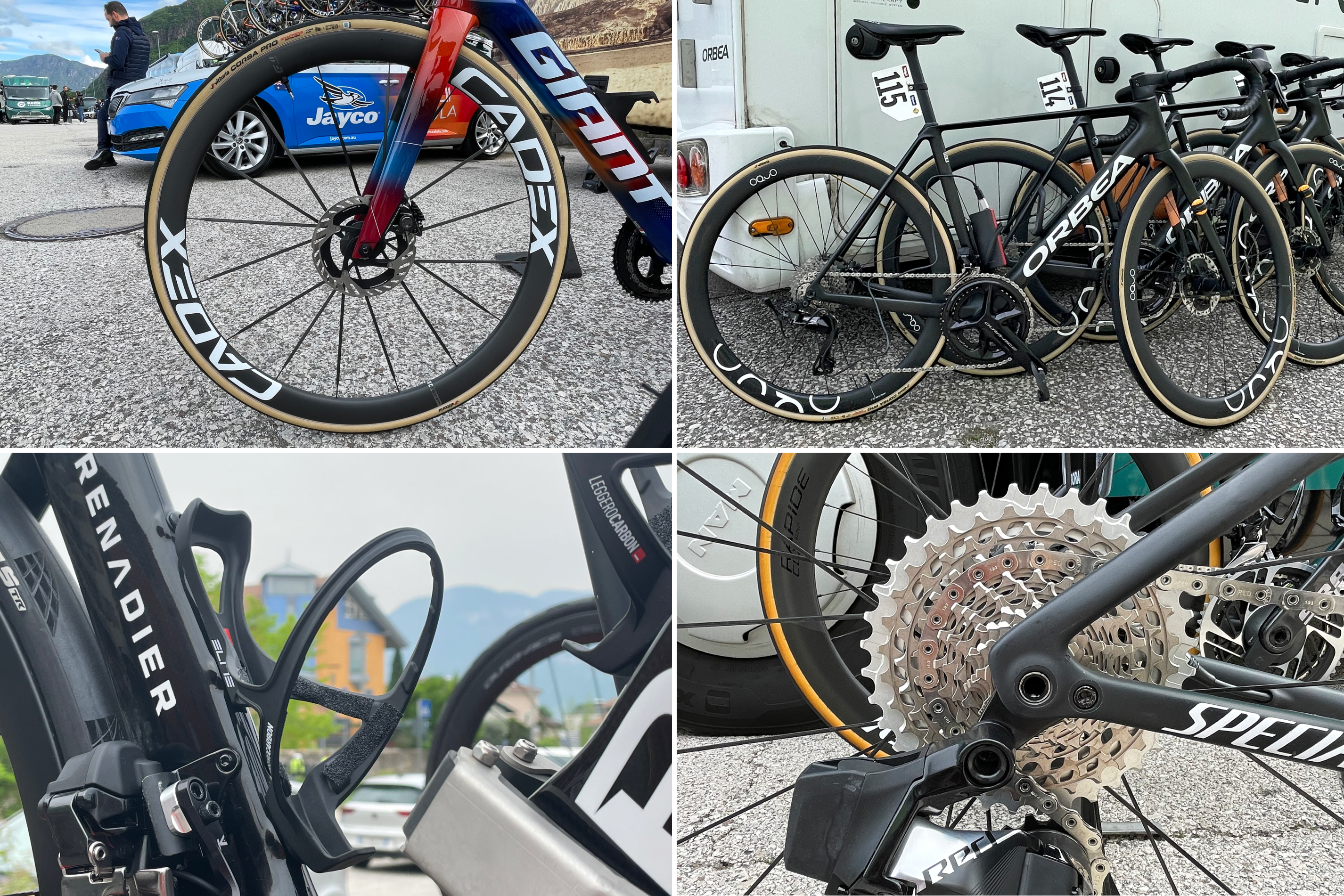
The Grand Tours are approaching, and riders are turning to the calendar's key preparation races to fine tune their form and climbing.
This week, those at the Tour of the Alps have been going uphill everyday. The race, which takes place across the Italo-Austrian border, offered five stages, none of which had less than 2,000m of elevation gain. Thursday's queen stage counted almost 4,000m.
Cycling Weekly wandered the team paddocks at the race, on the look out for tech modifications teams have made to keep their bikes light and optimised for climbing. Here's what we found.
Underweight frames
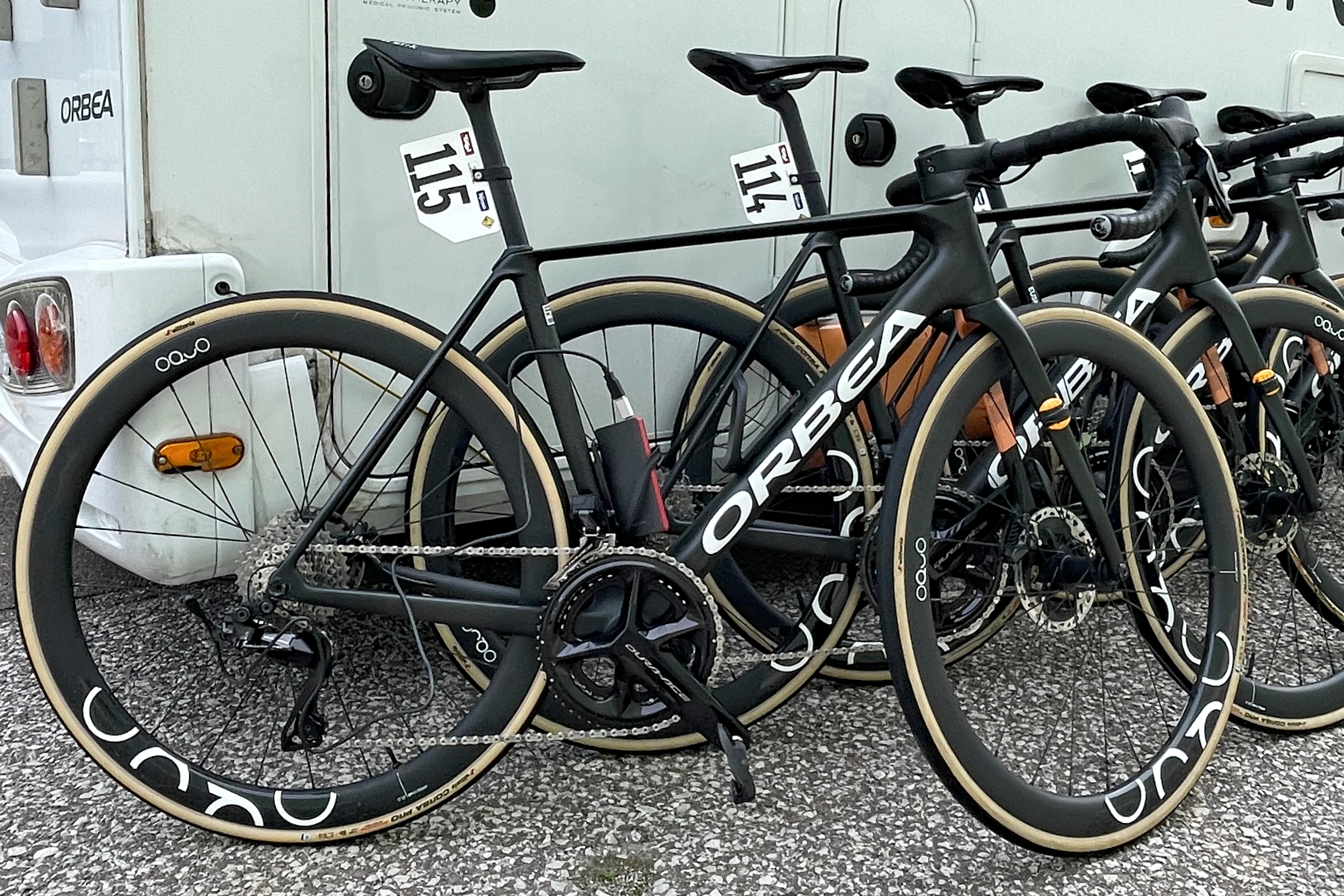
A lightweight frame is the obvious first step for teams looking to save grams on the climbs. Euskaltel-Euskadi brought two options to the race: the lightweight Orbea Orca OMX, and the heavier Orca aero. Riders preferred to use the former.
The OMX, Orbea claims, weighs just 6.7kg, putting it under the UCI's minimum limit of 6.8kg. With a few add-ons, though, like bottle cages, race numbers and transponders, the bike tips into the legal range.
According to Orbea, the latest OMX model saves riders around three watts at a gradient of 5% and six watts at 10%, compared to an aerobike. At the Tour of the Alps, the climbs hit almost 20% at points.
Ultralight wheels
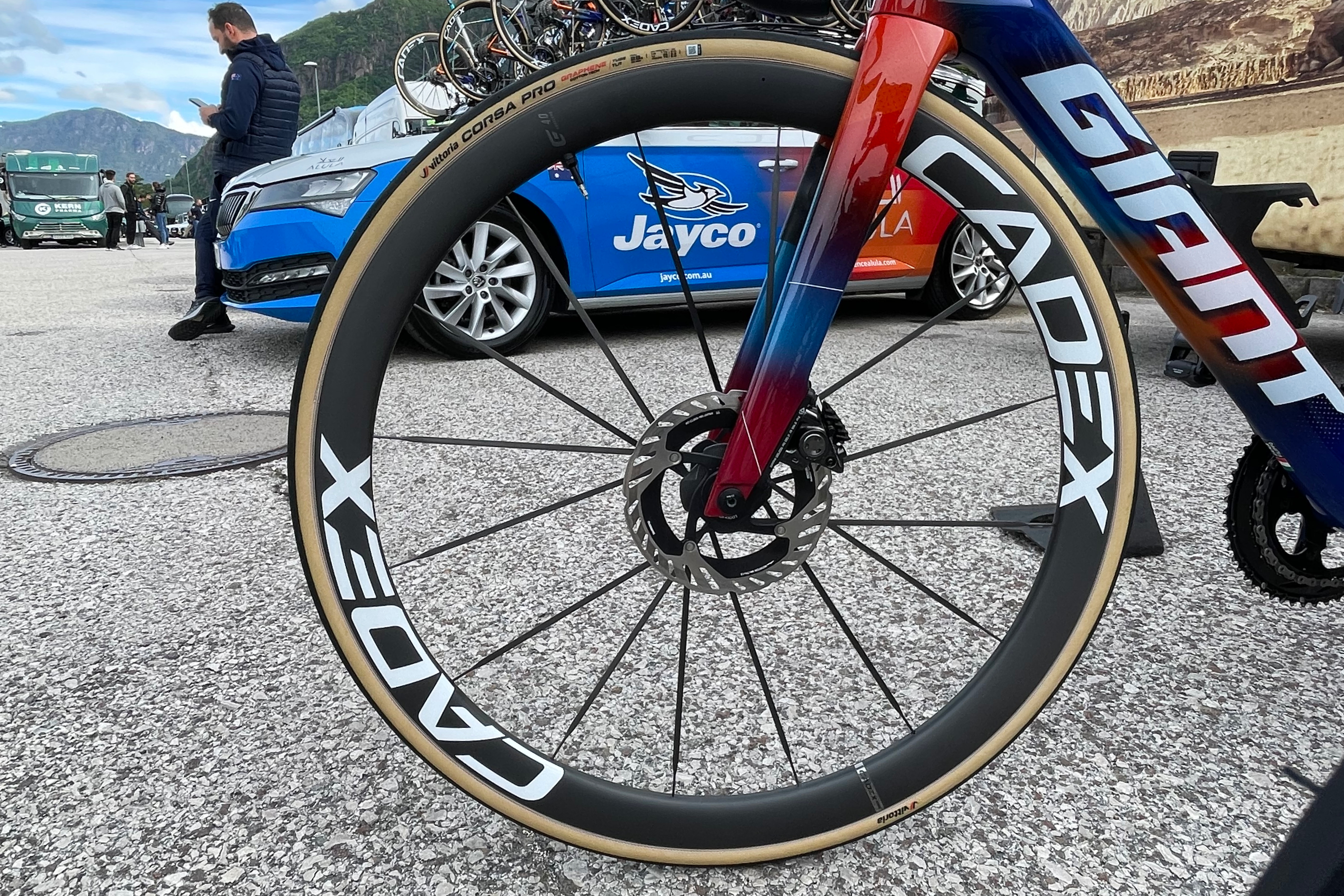
Alongside the frame and groupset, wheels are one of the heaviest parts of a bike, and a logical target for saving weight.
The above offering from Cadex, chosen by Jayco AlUla, are the brand's "lightest wheel system ever". They have bladed carbon spokes and "superlight" 40mm carbon rims to enhance aerodynamics and weight.
Each set has a stated weight of 1,249g, making them among the lightest mid-depth wheels on the market.
Carbon bottle cages
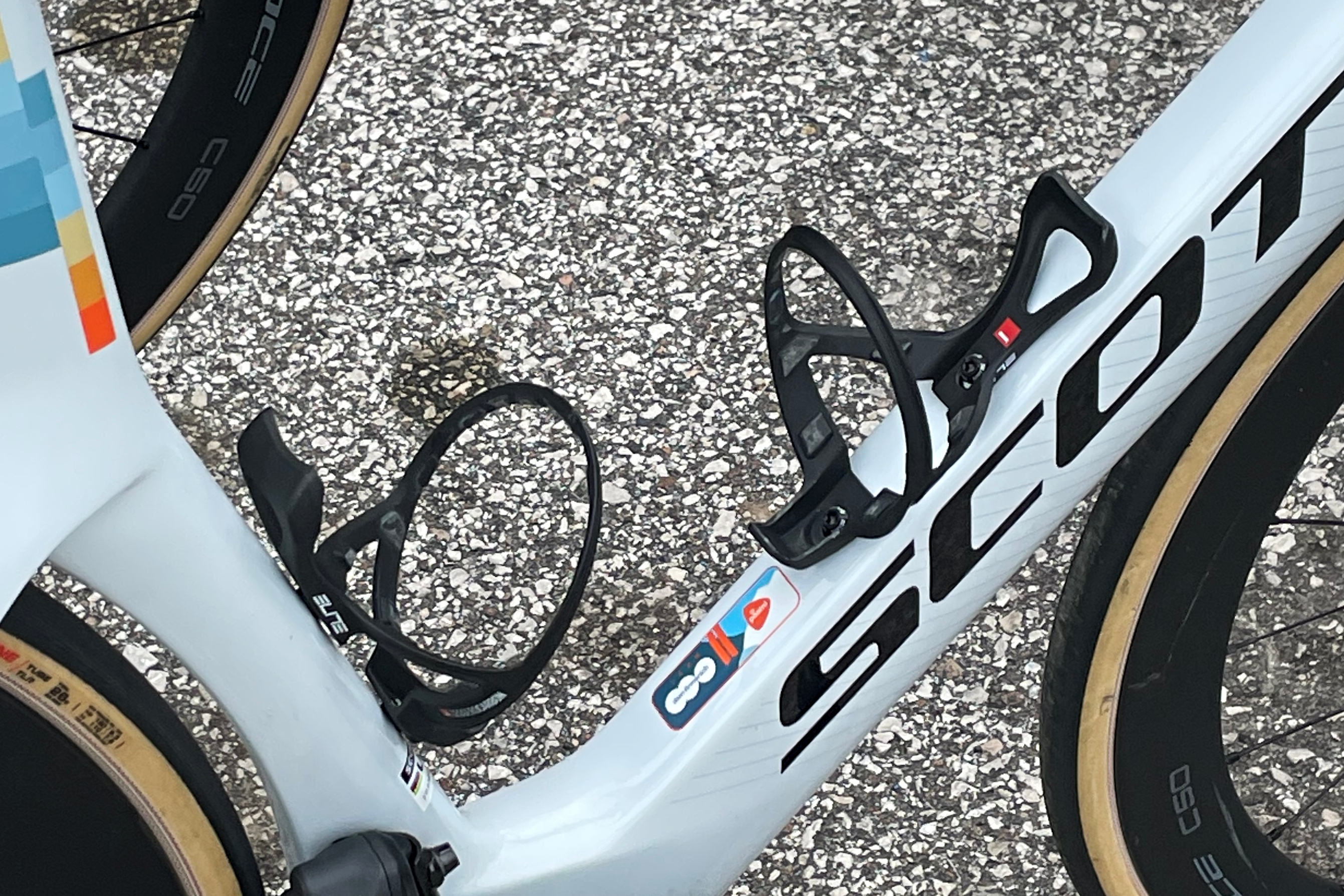
A number of teams, such as dsm-firmenich PostNL and Ineos Grenadiers, have been using Elite's Leggero carbon bottle cages in the Alps. They're not a new product, but they're popular among WorldTour teams, especially at hillier events.
Each cage weighs just 17g ("incredibly lightweight," says Elite). The brand's non-carbon offerings weigh more than twice as much.
To keep their bottles secure, Ineos Grenadiers' mechanics fitted sand paper to the inside of their cages, as you can see below.
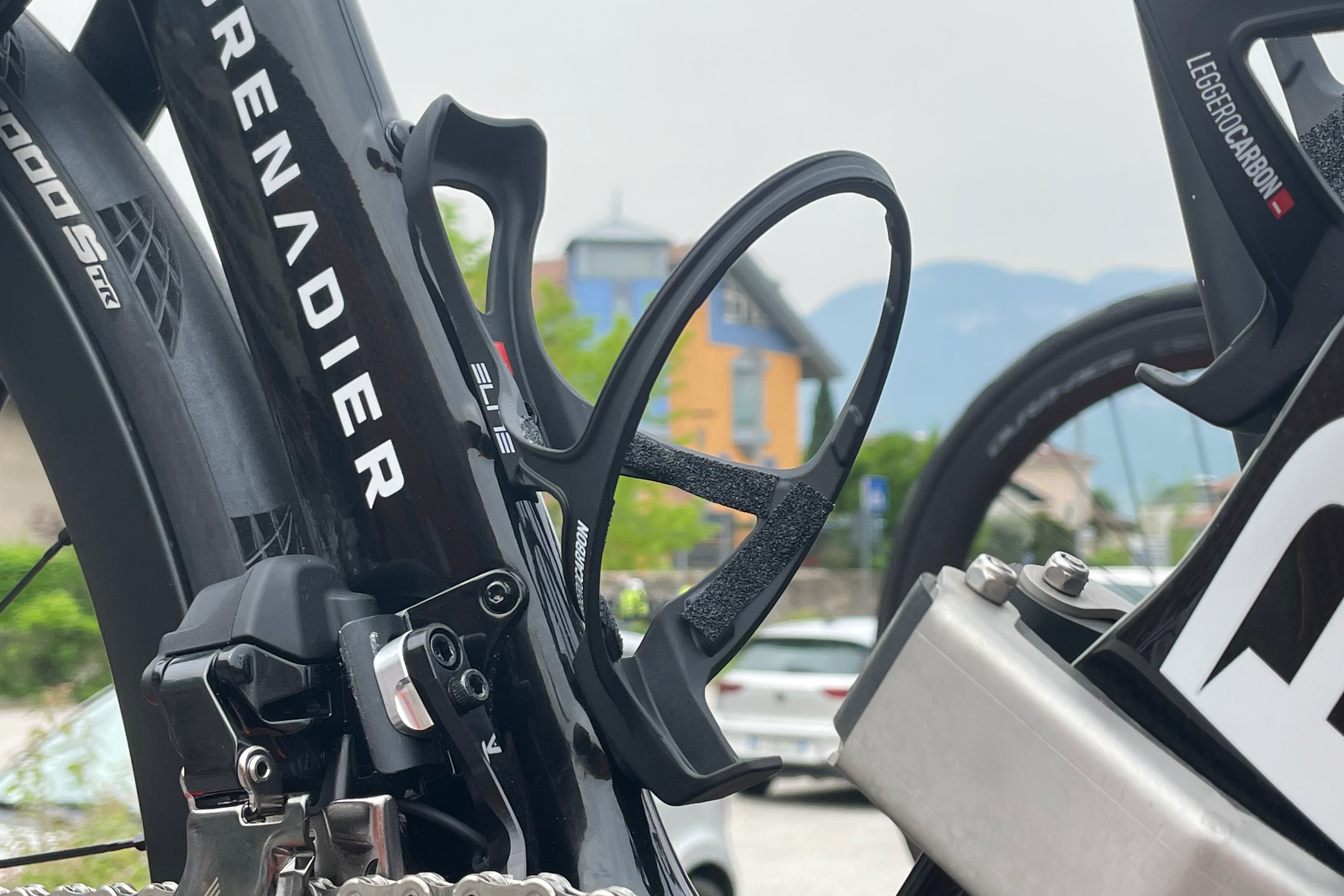
Bye bye bar tape
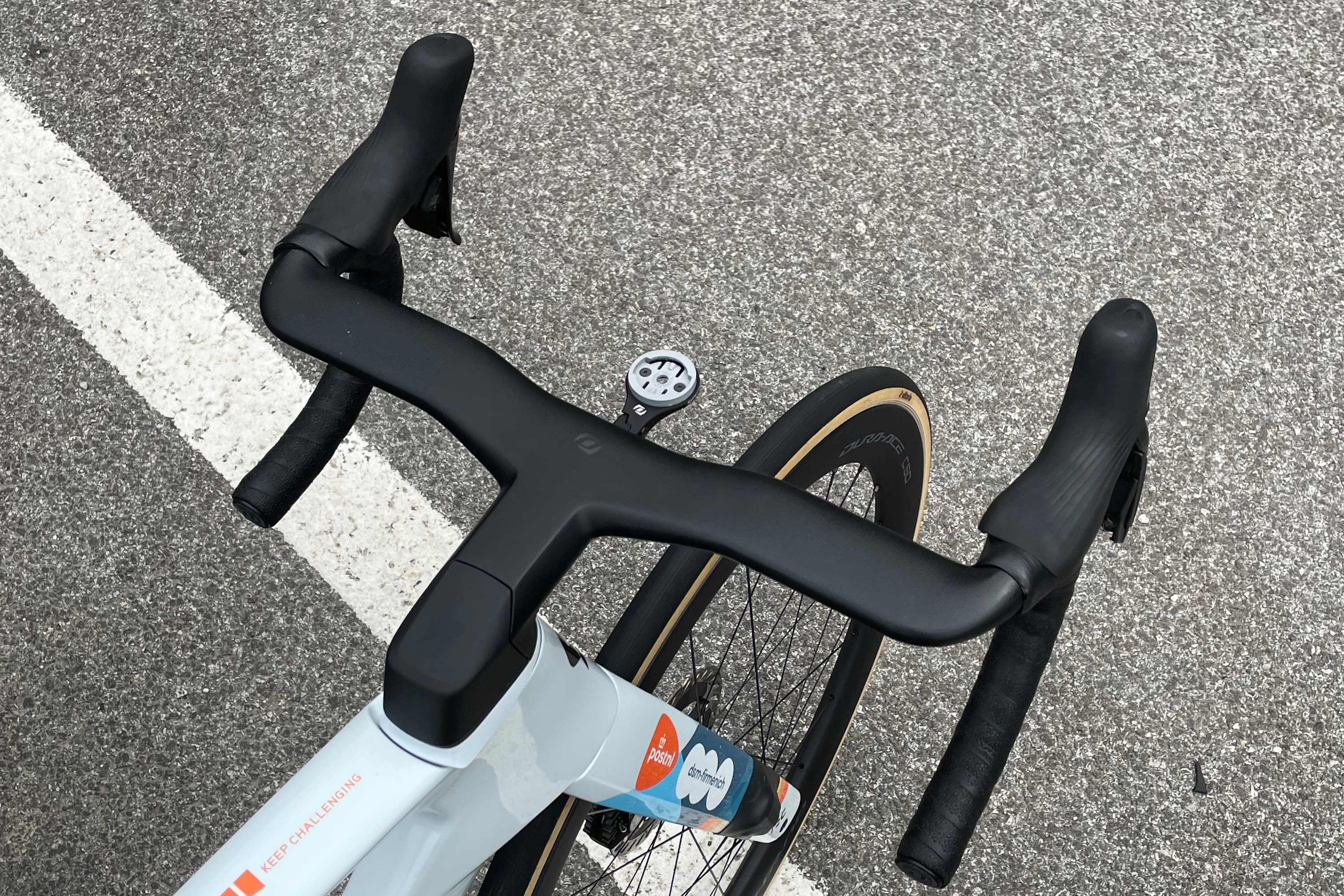
Why wrap parts of the handlebar that you don't hold?
The above cockpit belongs to Romain Combaud, one of dsm-firmenich PostNL's stronger climbers. The Frenchman decided to only cover his drops in tape, leaving the tops of his bars open to the elements.
Rather than being a crafty weight-saving tactic, this is likely just a feel preference, but it will knock off a few grams, too.
Hole-riddled saddles
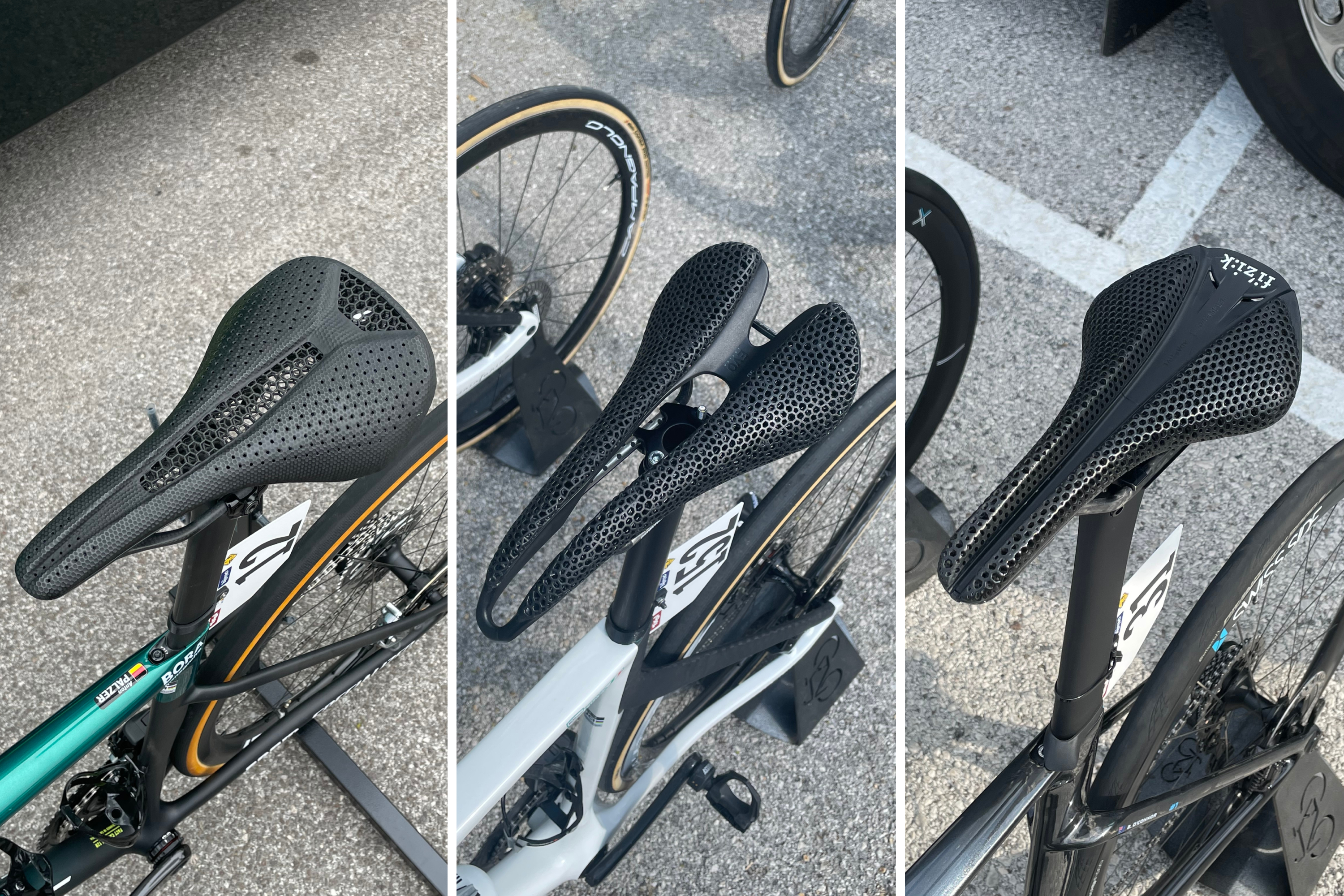
Though often confined to team sponsor brands, one piece of tech that riders like to pick themselves is their saddle.
Above, from left to right, are the choices of Anton Palzer (Bora-Hansgrohe), Riccardo Lucca (VF Group - Bardiani CSF - Faizanè) and Ben O'Connor (Decathlon AG2R La Mondiale), which are all 3D-printed with tiny holes.
The advantage of this is twofold: it allows better air flow, and brings down the overall mass. The look harks back to the 'drillium' fad of the 1970s and 1980s, when riders would drill holes into their frames and components to save a handful of grams.
In terms of saddles, the hole-riddled design can make them around 20g lighter.
Teeth, teeth, teeth
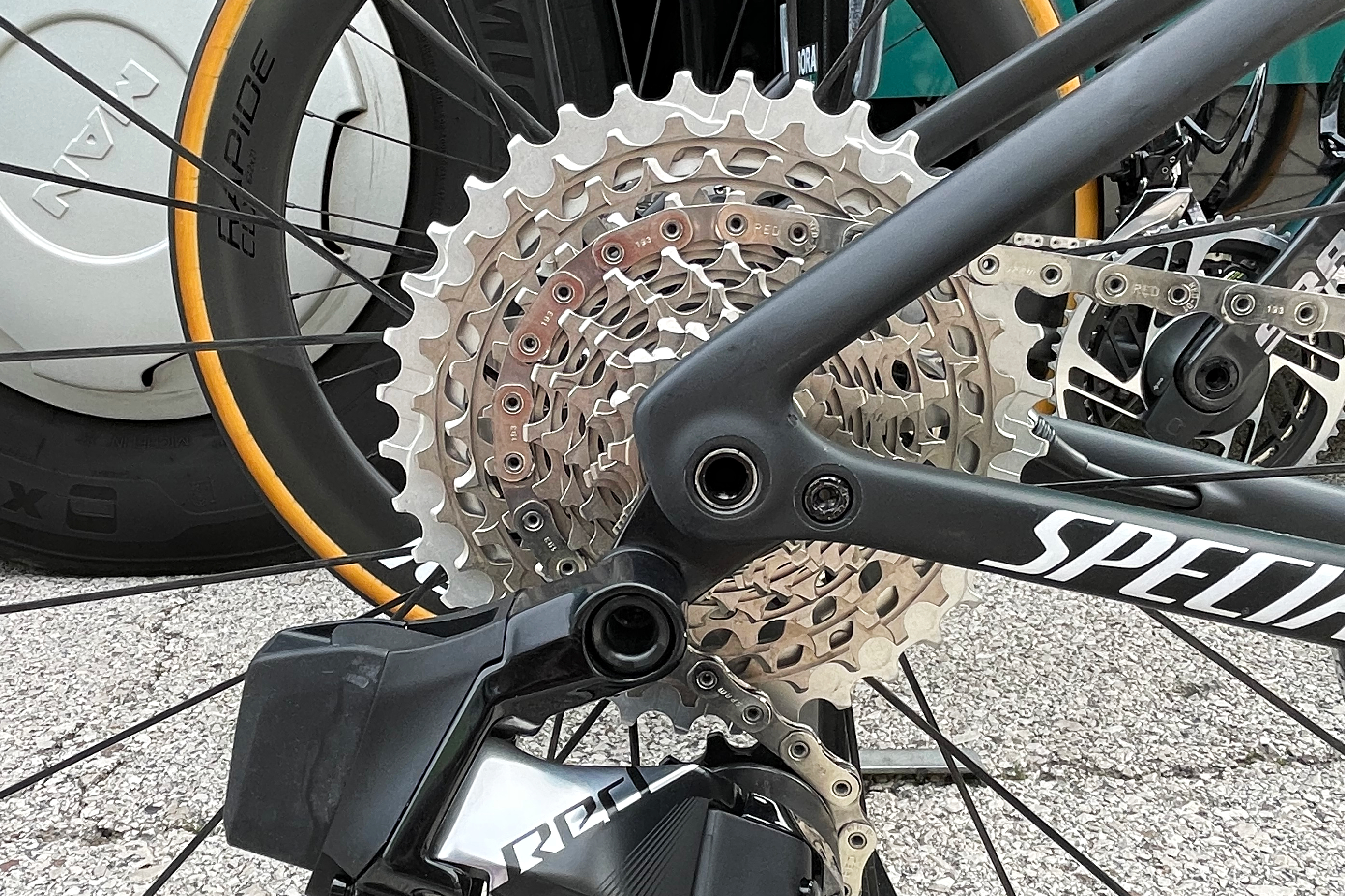
Though not a weight-saving measure, a bigger cassette range can make steeper gradients a lot more manageable.
Bora-Hansgrohe riders were running SRAM's largest road cassette, the biggest cog boasting 36 teeth. By comparison, Shimano's road cassettes only go up to 34 teeth.
With a 39-tooth small chainring at the front, Bora-Hansgrohe were running a very low gear ratio of 1.08, perfect for the steep Alpine roads.







